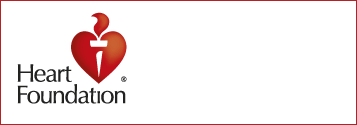Common medical tests to diagnose heart conditions
Your doctor may order different medical tests to help find out what your heart condition is and the best way to treat it. Some of these tests are explained below.
Blood tests
When your muscle has been damaged, as in a heart attack, your body releases substances in your blood. Blood tests can measure the substances and show if, and how much of, your heart muscle has been damaged.
Blood tests are also done to measure the level of other substances in your blood, such as blood fats (e.g. cholesterol and triglycerides), vitamins and minerals.
Your blood sample is taken from a vein in your arm. A laboratory then tests it and sends the results to your doctor, who will explain the results to you.
Electrocardiogram (ECG)
An ECG reads your heart’s electrical impulses. It shows how well your heart is beating.
Small sticky dots and wire leads are put on your chest, arms and legs. The leads are attached to an ECG machine which records the electrical impulses and prints them out on paper.
Your doctor may use an ECG to diagnose a heart attack or abnormal heart rhythms (called ‘arrhythmias’).
Exercise stress test
A stress test, sometimes called a ‘treadmill’ or ‘exercise’ test, is a type of ECG that is done while you are exercising. It helps your doctor to find out how well your heart works when you are physically active.
Echocardiogram (ultrasound)
An echocardiogram is a common test. It gives a picture of your heart using ultrasound, a type of X-ray. It uses a probe either on your chest or down your oesophagus (throat).
It helps your doctor check if there are any problems with your heart’s valves and chambers, and see how strongly your heart pumps blood.
Nuclear cardiac stress test
This test is sometimes called an ‘exercise thallium scan’, a ‘dual isotope treadmill’ or an ‘exercise nuclear scan’.
A radioactive substance called a ‘tracer’ is injected into your bloodstream. It goes to your heart and releases energy. Special cameras take a picture of this energy from outside your body.
Your doctor uses this picture to see how much blood flows to your heart muscle and how well your heart pumps blood when you are resting and doing physical activity. This test also helps your doctor to see if your heart muscle is damaged.
Coronary angiogram
A coronary angiogram, sometimes called ‘cardiac catheterisation’, may be done after a heart attack or angina.
A catheter (a small tube) is put into an artery in your groin, arm or wrist. The catheter is moved up inside the artery until it reaches your heart.
A special dye is injected into your coronary arteries and an X-ray is taken.
The X-ray shows your doctor where and how much your coronary arteries are clogged or blocked. It also shows how well your heart is pumping. Coronary angiograms help your doctor decide the best treatment for you.
Magnetic resonance imaging (MRI)
An MRI uses very strong magnets and radio waves to create detailed images of your heart on a computer. It can take still or moving pictures of your heart. Sometimes a special dye is used to make parts of the heart and coronary arteries easier to see.
This test shows your doctor the structure of your heart and how well it is working, so they can decide the best treatment for you.
Coronary computed tomography angiogram (CCTA)
This is a specialised type of computed tomography (CT) scan that may be used to help diagnose coronary artery disease. It is a non-invasive test for people who may be experiencing unusual cardiac symptoms.
Where to get help
- Always dial triple zero (000) to call an ambulance in a medical emergency
- See your doctor
- Visit healthdirect (external site) or call 1800 022 222
- Phone the Heart Foundation Helpline on 13 11 12
The above information is extracted from My heart, my life: a manual for patients with coronary heart disease, and is used with the Heart Foundation’s permission. © 2012 National Heart Foundation of Australia.

Acknowledgements
Heart Foundation
This publication is provided for education and information purposes only. It is not a substitute for professional medical care. Information about a therapy, service, product or treatment does not imply endorsement and is not intended to replace advice from your healthcare professional. Readers should note that over time currency and completeness of the information may change. All users should seek advice from a qualified healthcare professional for a diagnosis and answers to their medical questions.